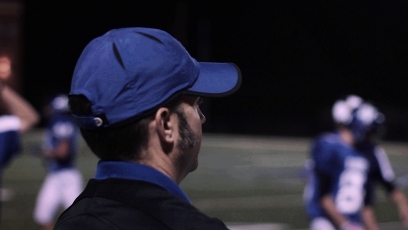The National Athletic Trainers' Association has released a new position statement on the management of sport concussion. The release came during the NATA's 5th annual Youth Sports Safety Summit in Washington, DC. in March 2014.
The statement is an update to the NATA's original 2004 concussion guidelines (Guskiewicz KM, et al. 2004) and addresses education, prevention, documentation and legal aspects, evaluation and return-to-play considerations. In particular, the authors amended the return-to-play guidelines and now recommend no return on the day the athlete is concussed. (Note, this brings the NATA in line with the consensus of experts, which has recommended no same-day return-to-play for a number of years).

The statement, created by the NATA Research & Education Foundation, appeared in the March 2014 issue of the Journal of Athletic Training,
"With the continued national spotlight on concussions from professional to youth sports, these recommendations provide a practical roadmap for athletic trainers, physicians and other medical professionals on injury identification and management. We also hope this document will serve as an educational tool for parents and school administrators," said Steven P. Broglio, PhD, ATC, lead author of the position statement and director of the Neurosport Research Lab in the School of Kinesiology at the University of Michigan.
"Athletic trainers (ATs) are commonly the first medical experts available on site to identify and evaluate injuries," added Broglio. "Without exception, ATs should be present at all organized sporting events - from practices to games - and at all levels of play and work closely with their physician or other designated medical expert to implement these guidelines. In light of these general protocols, each athlete should be treated on an individual basis."
Highlights
Education and Prevention
The statement recommends:
- Using proper terminology such as concussion or mild traumatic brain injury (mTBI) as opposed to colloquial terms as "ding" or "bell ringer," which minimize the injury severity. The recommendation that concussion and mTBI can be used interchangeably is a departure of some of the other concussion position statements and guidelines in recent years, and there has been an ongoing debate in the medical community about using concussion and mTBI interchangeably. "Our thought was to try to highlight that a concussion is a serious injury, rather than the thought that it is just a ding or bell-ringer," said Tamara Valovich McLeod, PhD, ATC, Professor and Director of the athletic training program at A.T. Still University in Mesa, Arizona and one of the position statement's co-authors. "I understand the point [that those who argue against using the terms interchangeably make]," McLeod says, "that all concussions are mTBIs but not all mTBIs are concussions, but ATs are most often discussing the injury with parents, adolescents, and coaches, so we thought to simplify the message and denote the seriousness regardless of whether the term concussion or mTBI is used";
- Educating administrators, sports medicine team members, coaches, parents and others on concussion prevention, cause, recognition and referral, physical and cognitive restrictions for concussed athletes, return-to-play protocols and ramifications of improper concussion management;
- Documenting potential modifying factors that could delay return to participation, and educate patients on these implications; and
- Understanding limitations of protective equipment for concussion prevention, and read all warning labels associated with that equipment.
Documentation and legal aspects
The statement recommends that athletic trainers:
- Be aware of state legislation as well as sport governing bodies and their policies and procedures regarding concussion management;
- Document the athlete's (and when appropriate the parent's) understanding of concussive signs and symptoms and his/her responsibility to report a concussion; and
- Communicate the status of concussed athletes to the managing physician, document all evaluations, management, treatment, return to participation and physician communications.
"The legislation and policy area is one that is important for ATs, because they need to not only be aware of any state laws, but also their state interscholastic association policy, school district and/or school policy, and their standing orders with their directing physician," says McLeod. "It's a multi-layered system of policies in which one could be more conservative than another. Furthermore, it is important that concussions are documented well as this injury holds a high degree of [potential] liability."
The statement's discussion of the legal liability aspects of concussion management as they relate to athletic trainers, it is worth noting, is believed to be the first such discussion in a position statement regarding concussion management.








